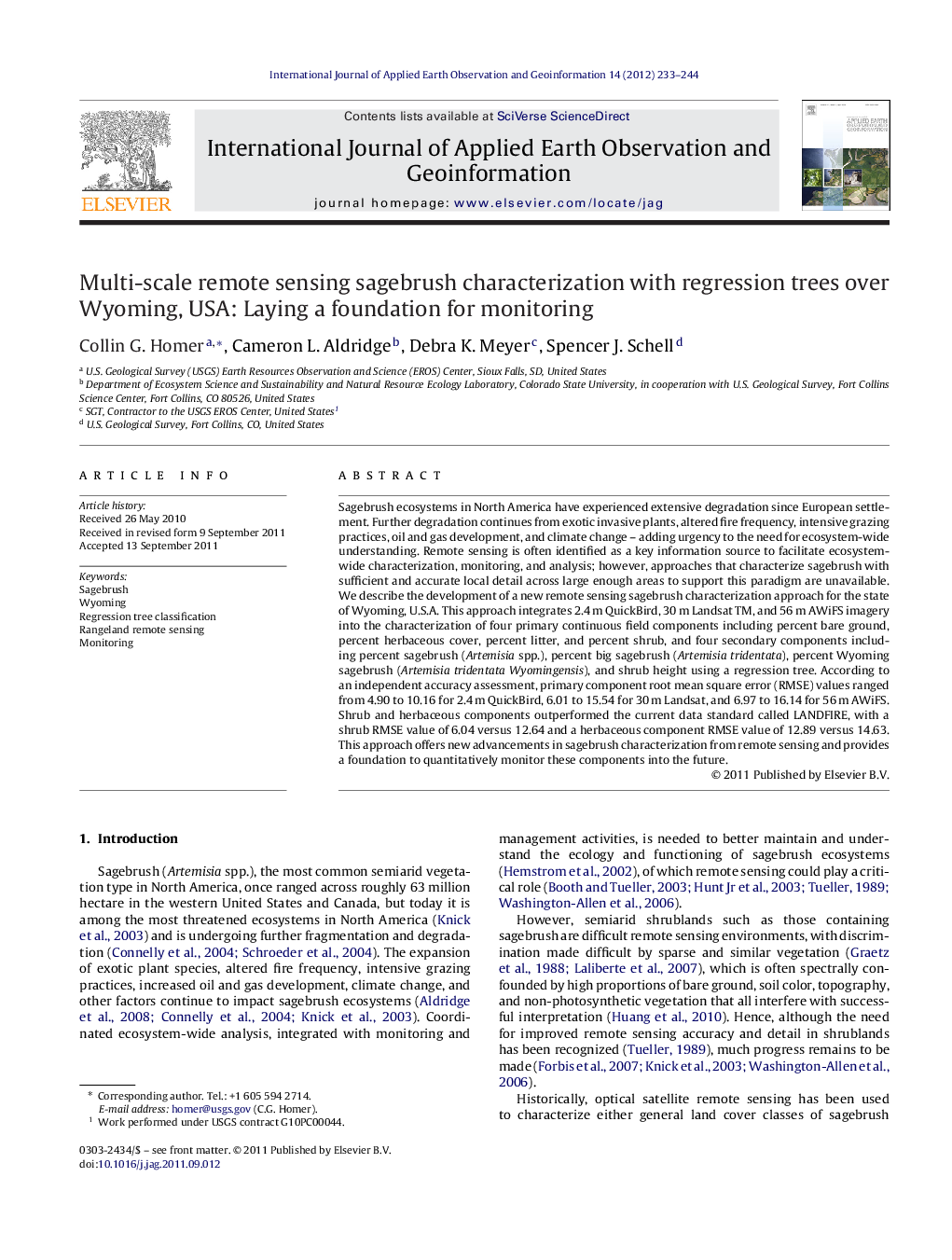| Article ID | Journal | Published Year | Pages | File Type |
|---|---|---|---|---|
| 4465051 | International Journal of Applied Earth Observation and Geoinformation | 2012 | 12 Pages |
Sagebrush ecosystems in North America have experienced extensive degradation since European settlement. Further degradation continues from exotic invasive plants, altered fire frequency, intensive grazing practices, oil and gas development, and climate change – adding urgency to the need for ecosystem-wide understanding. Remote sensing is often identified as a key information source to facilitate ecosystem-wide characterization, monitoring, and analysis; however, approaches that characterize sagebrush with sufficient and accurate local detail across large enough areas to support this paradigm are unavailable. We describe the development of a new remote sensing sagebrush characterization approach for the state of Wyoming, U.S.A. This approach integrates 2.4 m QuickBird, 30 m Landsat TM, and 56 m AWiFS imagery into the characterization of four primary continuous field components including percent bare ground, percent herbaceous cover, percent litter, and percent shrub, and four secondary components including percent sagebrush (Artemisia spp.), percent big sagebrush (Artemisia tridentata), percent Wyoming sagebrush (Artemisia tridentata Wyomingensis), and shrub height using a regression tree. According to an independent accuracy assessment, primary component root mean square error (RMSE) values ranged from 4.90 to 10.16 for 2.4 m QuickBird, 6.01 to 15.54 for 30 m Landsat, and 6.97 to 16.14 for 56 m AWiFS. Shrub and herbaceous components outperformed the current data standard called LANDFIRE, with a shrub RMSE value of 6.04 versus 12.64 and a herbaceous component RMSE value of 12.89 versus 14.63. This approach offers new advancements in sagebrush characterization from remote sensing and provides a foundation to quantitatively monitor these components into the future.
► We model 3 scales of imagery into eight shrubland continuous field components. ► Models were developed over large areas, but still retain local detail and accuracy. ► High spatial resolution imagery models are overall the most accurate. ► Bare ground was the most accurate component mapped, Wyoming sagebrush the least. ► This approach lays a strong foundation for repeated measurement into the future.
